
Rather than adhering to the rigid notion of “never missing a workout,” intuitive exercise is a sustainable approach to fitness that emphasizes listening to your body. It’s about moving away from strict schedules and allowing your body’s cues to guide your movement choices.
Many of us push ourselves too hard to stick to a rigid exercise regimen, inadvertently adding stress to our lives. The irony is that this stress can be counterproductive to the very goals that motivate us to exercise, such as weight loss or improved fitness.
Intuitive exercise is not focused on weight loss but on fostering a less stressed and better-feeling day. Let’s explore what intuitive movement might look like for you and how you can integrate it into your life for a more balanced and fulfilling fitness journey.
Intuitive Movement Is the Sustainable Solution to Exercise Burnout
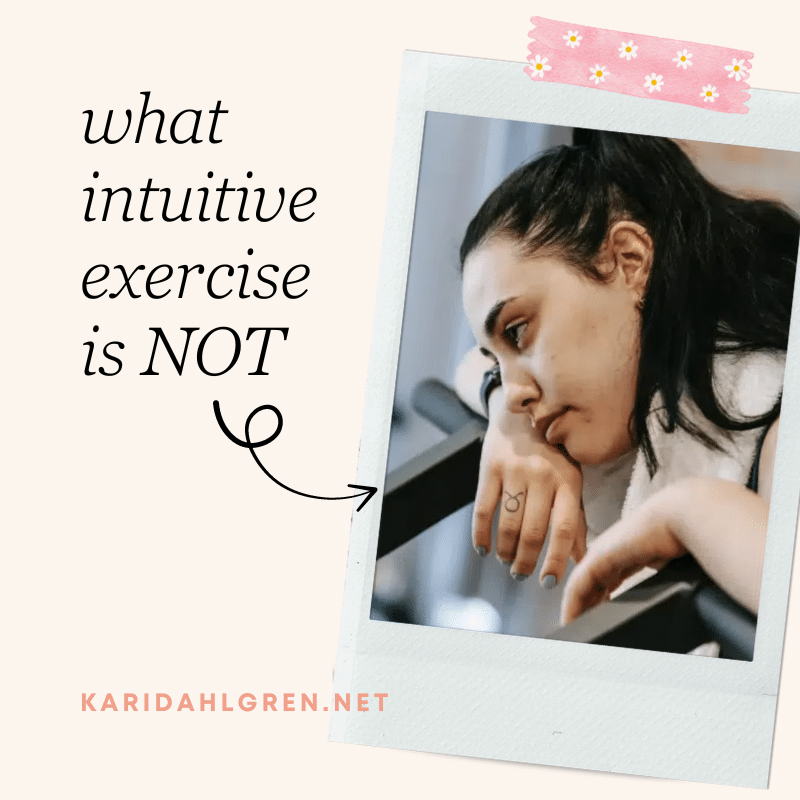
Intuitive exercise offers a sustainable solution to the common issue of exercise burnout. At its core, this approach fosters a deeper connection with your body, allowing it to guide joyful movement. Instead of adhering to rigid goals that demand pushing yourself “no matter what,” intuitive exercise encourages you to tune in and listen to your body’s cues as you go.
This shift in focus from external goals — like burning a specific number of calories or achieving a certain body shape — to internal cues can be transformative. Intuitive exercise is about listening to how your body feels, honoring what it craves, and doing what brings you joy.
Traditional exercise approaches often come with a sense of obligation and guilt, especially when a workout is missed or goals aren’t met. This can compound the stress we already face, leading to physical and mental health consequences that may outweigh the benefits of exercise itself.
Excessive stress often leads to weight gain, not loss, due to the body’s release of cortisol, which can increase appetite and fat storage.[1] Similarly, overdoing exercise can be counterproductive, as it may raise cortisol levels.[2] This can lead to increased hunger, fatigue, and a predisposition to weight gain, not loss.
Fortunately, intuitive exercise changes the narrative. It moves away from external expectations and rigid plans, allowing you to listen to your body and honor its needs on a day-to-day basis. For example, if you’re feeling fatigued or stressed, you might choose rest or a gentle form of exercise like level 1 yoga (a personal favorite of mine) without any guilt or shame.
This approach empowers you to make choices that are best for your body without the pressure associated with traditional exercise routines. By building momentum towards a healthier relationship with exercise, you’ll start looking forward to it rather than dreading it.
Examples of Intuitive Exercise
Unlike traditional exercise routines that may feel rigid or monotonous, intuitive exercise allows you to explore various activities that align with your body’s needs and preferences. By understanding different examples, you can better tune into your body’s signals and choose exercises that not only enhance your physical health but also bring you joy and satisfaction.
If you need some ideas to help you get started with intuitive exercise, here are some examples that you can mix and match to suit your needs on any given day:
- Yoga: This mind-body practice combines physical postures, breathing techniques, and meditation to enhance flexibility and mental clarity. Yoga is a particularly attractive for anyone aspiring to become an intuitive eater, as studies show that practicing yoga is associated with greater adoption of intuitive eating compared to being physically inactive.[3]
- Swimming: This low-impact exercise is ideal for those seeking a full-body workout without putting strain on joints. It’s also a refreshing way to connect with your body and relax your mind.
- Walking: A simple yet effective form of exercise, walking can be easily adjusted to your energy levels and mood. It’s a wonderful way to clear your mind and get some fresh air.
- Pilates: Focusing on core strength, flexibility, and overall body conditioning, Pilates is a gentle way to build muscle and improve posture. It encourages mindfulness and body awareness.
- Tai Chi: This gentle form of martial arts focuses on slow, deliberate movements and deep breathing. It’s excellent for balance, flexibility, and mental calmness. When you’re craving something calming, tai chi is an excellent choice for intuitive exercise.
- Rowing: An all-around workout that targets multiple muscle groups, rowing can be a meditative way to build strength and endurance. It’s a great option for those seeking rhythmical and low-impact exercise.
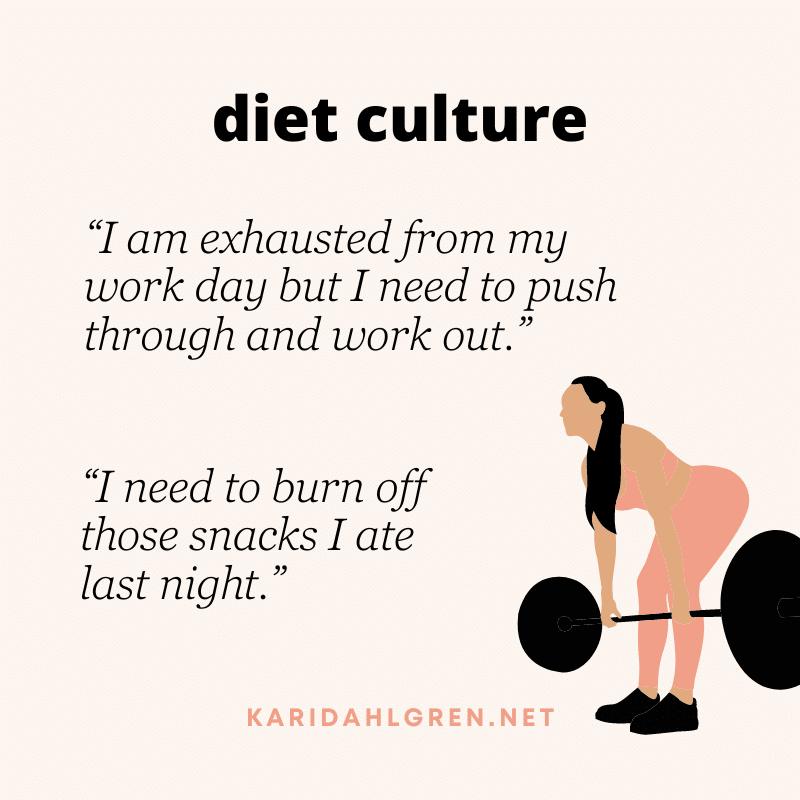
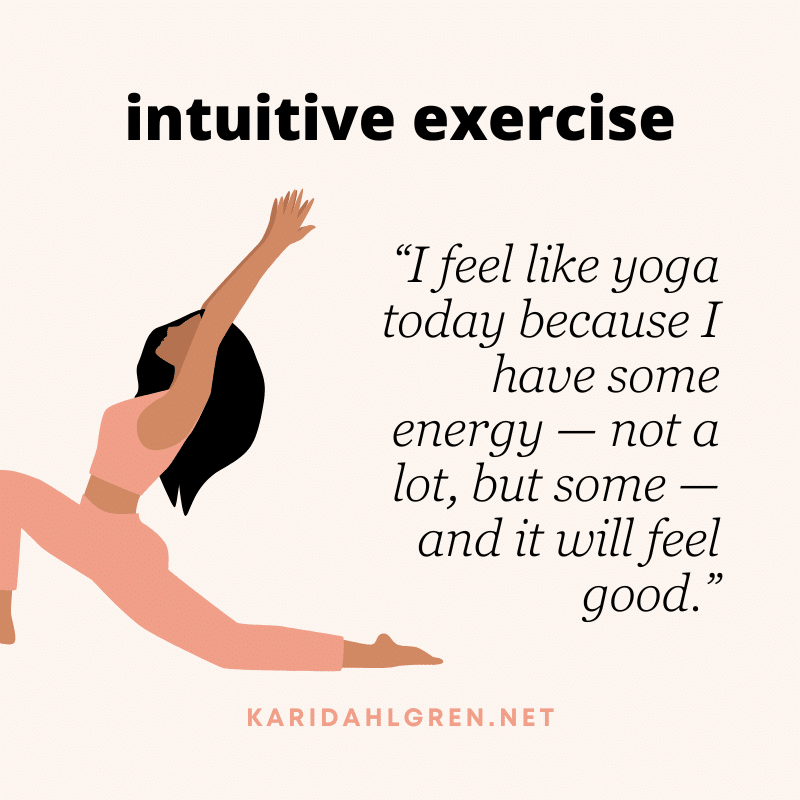
- Spin Class: High-energy and fun for people who love cardio, spin classes can be adapted to your fitness level. They’re a great way to get your heart pumping. Be sure to listen to your body when participating in high-intensity exercise to make sure you’re moving based on your needs, not someone else’s.
- HIIT (High-Intensity Interval Training): This type of workout alternates between intense bursts of activity and fixed periods of rest. It’s effective for improving fitness quickly but should be done according to your body’s readiness.
- Strength Training: Building muscle through weightlifting or bodyweight exercises not only enhances strength but also boosts metabolism.[4] Pay attention to your body’s feedback to avoid overexertion. Rest between exercises and enjoy full days of rest in between as your body needs.
- Dance: Whether it’s a structured class or freestyle in your living room, dancing is a joyful way to express yourself and stay active. This intuitive exercise is all about moving in a way that feels good to you. Studies have found that intuitive movement reembodiment (i.e. dancing therapy that emphasizes natural, free-flowing movement) improves quality of life and helps reduce depression.[5]
- Hiking: Exploring nature through hiking is not only good for physical health but also for mental well-being. It’s a chance to disconnect from stress and reconnect with your body.
- Group Fitness Classes: These can provide a sense of community and motivation. Choose classes that align with your mood and energy level for the day. Pay close attention to your body’s needs and not what others around you are doing.
- Rest: An essential part of intuitive exercise, rest days allow your body to recover and prevent burnout. Listen to your body’s need for relaxation and rejuvenation.
My personal choice of intuitive exercise usually involves Pilates, level 1 yoga, walking, and plenty of rest. I love the slowness of level 1 yoga classes because I feel more of the mind-body connection than in the faster-pace heated yoga classes. Pilates is challenging, and I enjoy the core-strengthening benefits. I definitely listen to my body and cancel classes if my body is asking for rest! Even if it costs me a cancellation fee, listening to my body is always worth it.
Tips for Adopting Intuitive Exercise
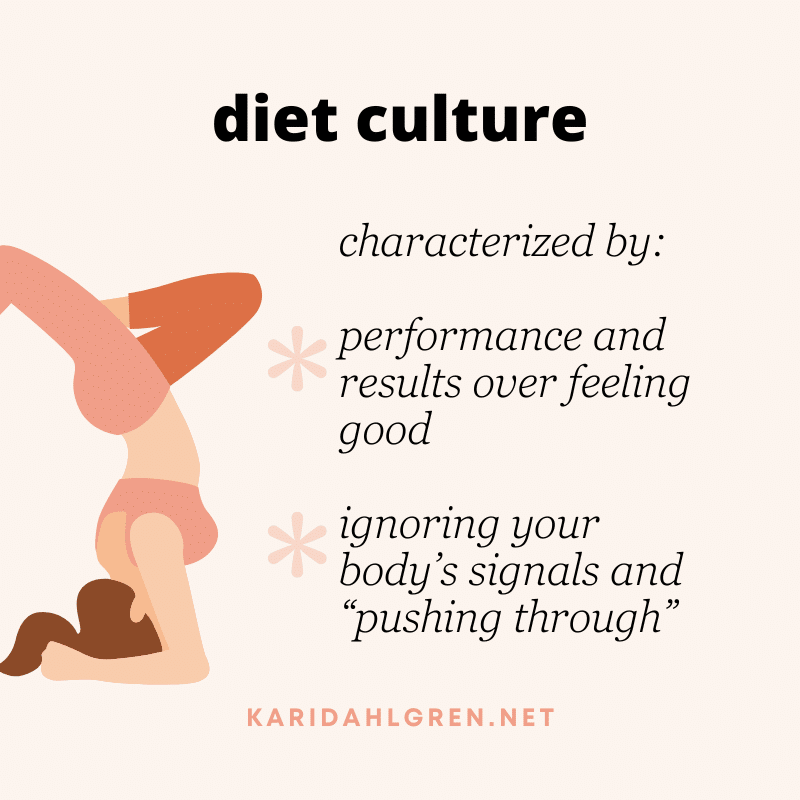
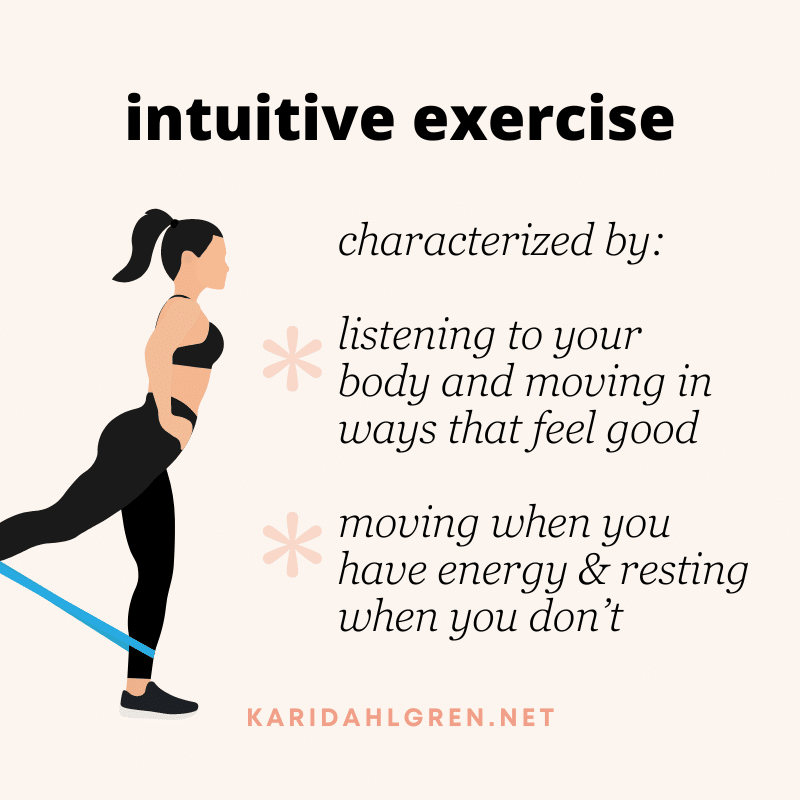
Instead of following rigid workout schedules or intense routines that may not suit your body’s needs, intuitive exercise encourages you to listen to your body and move in ways that feel good to you. This approach can lead to increased motivation and consistency, as you’re more likely to stick with exercise that you enjoy and that feels right for you.
Here are 7 practical tips for adopting intuitive exercise:
1. Embrace Little “Movement Snacks”
In the book Built from Broken, a concept that particularly resonated with me was the idea of “movement snacks.” This clever term refers to the practice of incorporating short bursts of movement into your day, especially during long periods of work.
Personally, when I’ve been sitting at my desk for a couple of hours, I find myself craving some form of movement. To accommodate this, I get up from my desk and occasionally perform a few lunges to stretch my hip flexors. These little “movement snacks” are an excellent starting point for anyone looking to embrace intuitive exercise. They encourage you to check in with yourself multiple times a day and provide your body with what it wants.
2. Ditch Rigidity
Intuitive exercise is all about flexibility and listening to your body’s cues, which means it’s time to ditch the rigidity often associated with traditional fitness routines. Instead of adhering to a strict schedule or feeling obligated to complete a certain type of workout, allow yourself the freedom to choose activities that resonate with how you feel in the moment. This approach not only reduces the pressure and guilt that can come with missed workouts but also fosters a more positive and sustainable relationship with exercise.
3. Avoid Highly Competitive Atmospheres (Unless It Brings You Joy)
Adopting intuitive exercise means being mindful of the environments in which you choose to work out. Highly competitive atmospheres, like some bootcamp or CrossFit gyms, can sometimes challenge your commitment to listening to your body. The pressure to keep up with others or never miss a workout can overshadow the importance of tuning into your body’s needs.
For example, I once enjoyed the high-intensity and strength-training classes at a UFC gym. However, as I delved deeper into my journey with Psycho-Spiritual Wellness, my unique approach to stopping compulsive eating, I found it difficult to maintain my values in an environment where calorie counting and body negativity were prevalent. Ultimately, I chose to leave that gym in favor of gentler forms of exercise, and I’ve been much happier since.
This isn’t to say that high-intensity exercise and competitive gym environments are bad — far from it. Some people thrive in a competitive environment and know how to honor their body’s needs despite what people around them are doing. To foster intuitive exercise, it’s crucial to find a space that supports your goals and allows you to stay true to your values.
4. Embrace Variety and Spontaneity
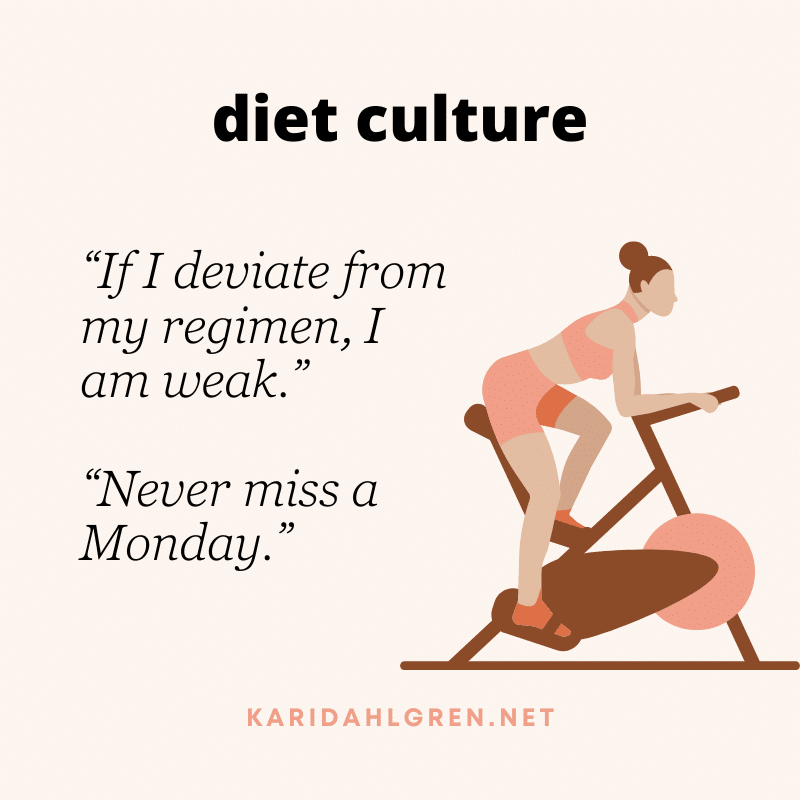
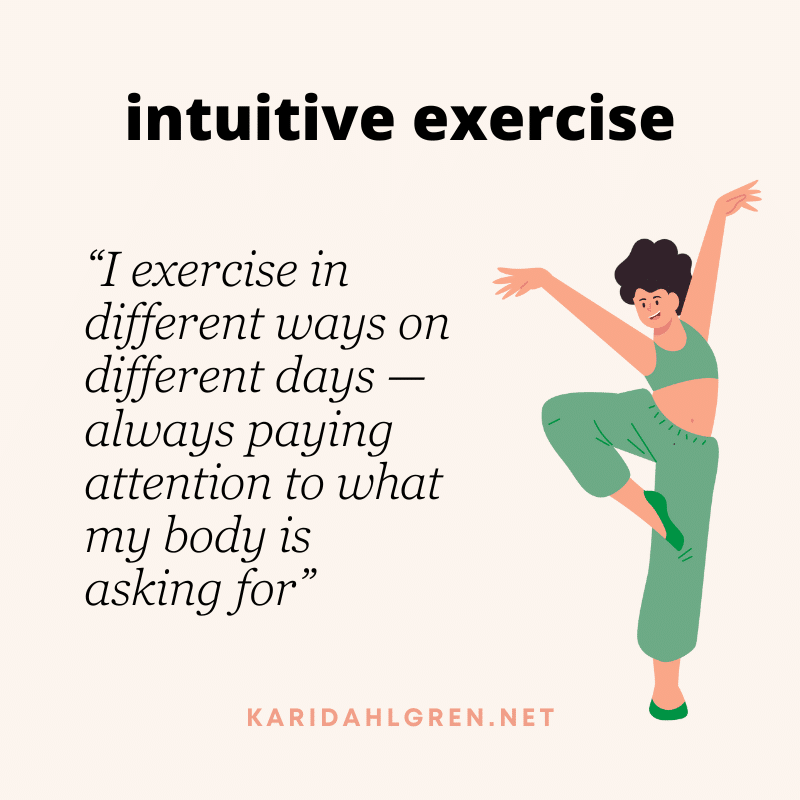
Embracing variety and spontaneity is a key aspect of intuitive exercise. Instead of sticking to a monotonous routine, allow yourself the freedom to explore different types of activities and workouts. This not only keeps exercise exciting but also ensures that you’re engaging different muscle groups and avoiding boredom. Consider using services like ClassPass, which allow you to access a wide range of workout classes from different studios in your area.
5. Set Wellness-Centered Goals
When setting goals for your intuitive exercise journey, it’s important to focus on objectives that enhance your overall well-being and personal growth, rather than solely concentrating on weight loss or physical appearance. Consider setting intentions that promote a deeper connection with your body, such as improving flexibility, increasing strength, or developing better balance. Goals like these not only contribute to your physical health but also foster a sense of accomplishment and self-awareness.
6. Embrace Rest
Embracing rest is a crucial component of intuitive exercise. It’s important to recognize that rest days are not a sign of weakness or lack of progress, but rather an essential part of your body’s recovery process. Allowing yourself time to rest and recharge helps prevent burnout and reduces the risk of injury.[6] It’s during these periods of rest that your muscles repair and strengthen, ultimately contributing to your overall fitness and well-being.
7. Cultivate Self-Compassion & Balance
On your intuitive exercise journey, it’s important to release any self-judgment or criticism and embrace a gentle approach towards your movement choices. Allow yourself the flexibility to adapt your routine based on how you feel in the moment, honoring your body’s needs with kindness and understanding.
Intuitive exercise isn’t about pushing yourself to extremes or neglecting the importance of rest and recovery; it’s about finding a harmonious balance that respects the natural ebb and flow of your physical and emotional state.
Get Started with Movement That Feels Good
Intuitive exercise offers a refreshing and sustainable approach to fitness that prioritizes listening to your body and finding joy in movement. By letting go of external expectations and rigid routines, you can embrace a more flexible and adaptable way of staying active that honors your body’s unique needs. This journey is about cultivating self-compassion, embracing variety, and recognizing the importance of rest and recovery.
If you want support on your journey towards intuitive exercise, I highly recommend my free ebook, which you can download below. It comes with a free 5-day email course in Psycho-Spiritual Wellness, my unique approach to stopping compulsive eating. If you want to get better at listening to your body, these freebies are the perfect next step:
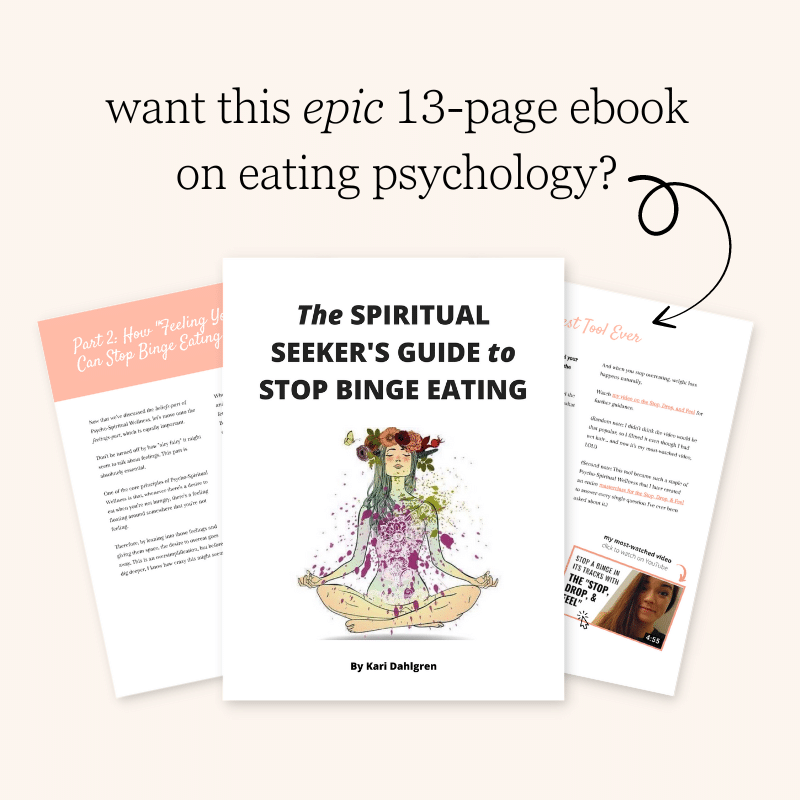
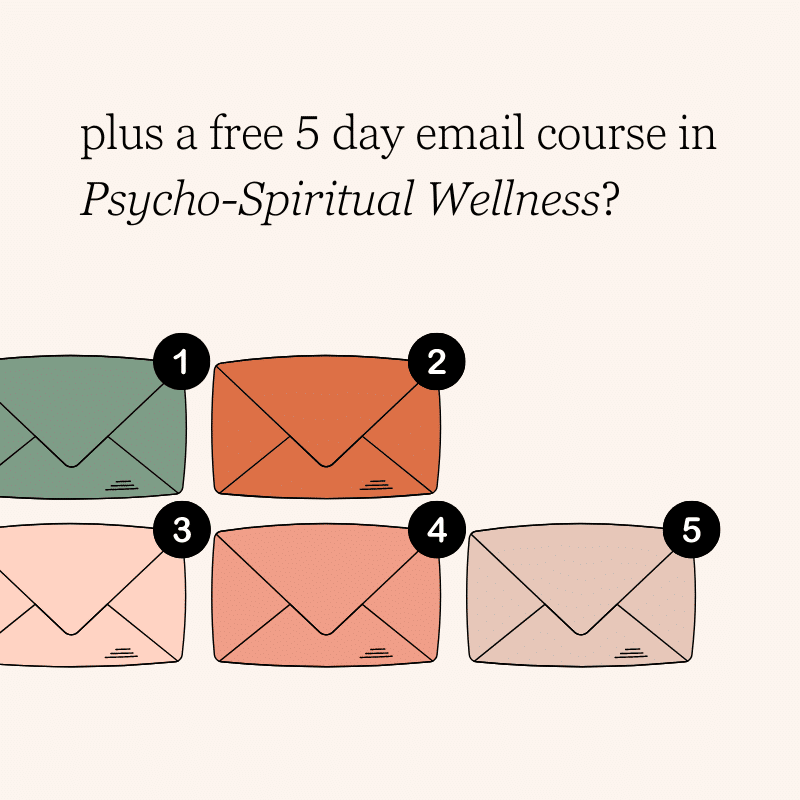
![best seller [cover of Why We Do the Things We Do]](https://karidahlgren-net.b-cdn.net/wp-content/uploads/2023/09/why-we-do-the-things-we-do-1.png)
